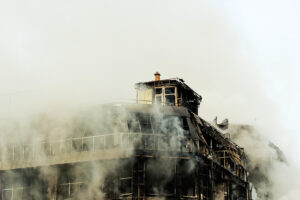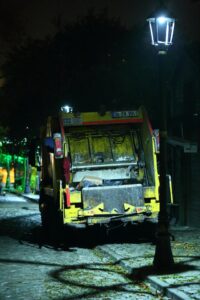Two more fatalities due to falls from heights in Malaysia

Due to poor fall protection, two roof cleaners in their 30s died after falling 27 meters. Warmest sympathies to the families, friends, and coworkers of the two deceased. First off, since this was an accident that could have been prevented, the hiring party should be prepared to face legal action for failing to maintain a safe system of work while both employees were on the roof.
Employers are required by law to make sure that hazards are recognized, risks linked with the hazards are assessed, and then the hazards are managed, or HIRARC. It is obvious that this did not occur since if it had, the two local workers would not have fallen.
The “employing party” should be questioned during the Department of Safety and Health (DOSH) investigation about the work schedule, task methodology, safety prevention system that was used, the two workers’ prior experience with roof work, task supervision, normal ways of doing things (culture), etc. This task ought to have been categorized as “high risk,” requiring the utmost care at all times.
Although falls from height are a common cause of workplace fatalities, employers, contractors, and construction firms continue to ignore the hazard. Two families have lost loved ones, friends and coworkers have been affected, and these people’s lives will never be the same.
Due to the perceived risks, such occurrences damage the industry’s reputation and do little to inspire people to enter the workforce.
Risks associated with working at height (WAH) are too frequently minimized;
- Inadequate training, inadequate or incorrect fall prevention devices, and improper usage of prevention equipment
- Incompetent monitoring of operations that are obviously “high risk”
- Employers, contractors, or builders are always taken off guard.
- This episode appears to be an example.
In both Malaysia’s private and public sectors, self-regulation of workplace Safety and health prevention has not been successful in gaining traction. An OSH 2021 (Amendment) Bill was approved in Parliament earlier this year and is expected to become “law” this year as a result. This new rule covers all private and public workplaces, closes legal application gaps, and dramatically increases financial and non-financial penalties.
Additionally, a piece of law tailored to the construction and contracting industry and based on CDM (construction design management) principles was planned to be implemented.
In other words, the Occupational Safety & Health Construction Industry Management (OSHCIM) 2017 Guidelines were supposed to become “law,” but due to a series of changes in government, this has been postponed.
Without these important pieces of legislation, there is not enough of a deterrent to get employers, contractors, and builders to “value workplace Safety & Health” to the point where enough resources, knowledge, and leadership are used so that Malaysia outperforms other forward-thinking nations. Accident rates would decrease if safety prevention was effectively covered at “project tender stage” and then put into practice on-site.
Unfortunately, the converse happens when contractors submit bids for projects at costs that are too low, leading to the cutting of non-revenue-generating project components, such as safety and health prevention measures. Contractors would submit bids in accordance with CDM standards if safety was built into projects.
The following video was on a Malaysian construction site.








